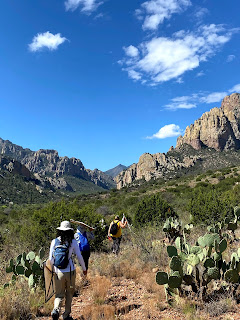That's a Wrap

Wow, what a trip! The expedition to Arizona has been an amazing experience. We started as strangers united with a common goal of educating our students and promoting environmental awareness, but we left as friends. Yesterday was our last day of the trip before we all got on flights to our respective cities. Even though our group of teachers varied by subject and geographic location, we learned so much from each other that will transform our classrooms. I loved being immersed in nature and surrounded my individuals that are passionate about learning and inspiring others. Being in Arivaca and Portal, AZ was good for the soul. In addition to the breathtaking views, it was amazing to see how plants and animals survived in this ecosystem. I live in D.C. so this was a big change from my typical view. I could look at these mountains all day. These poppies were my favorites. I could not believe how colorful and full of life it was in southern Arizona. We were blessed with beautifu





